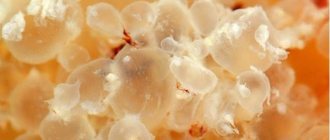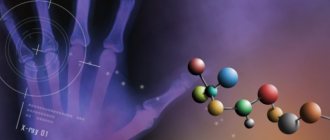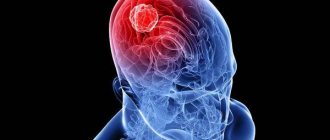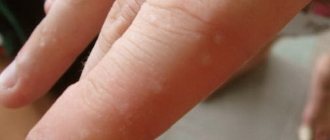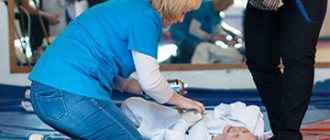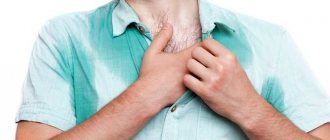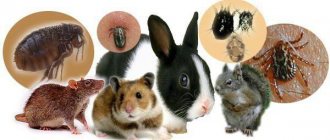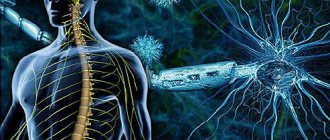Scurvy is a disease that progresses due to insufficient vitamin C (ascorbic acid) in the human body. This, in turn, leads to disruption of the production of a protein such as collagen, which is responsible for the reliability of the walls of blood vessels and the elasticity of connective tissues. As a result, there is a gradual destruction of cartilage and bones, and a decrease in the functionality of the bone marrow.
- Etiology
- Symptoms
- Complications
- Diagnostics
- Treatment
- Prevention
Scurvy leads to the necrosis of the bone bed of the teeth, which is why they begin to rot and, as a result, fall out. It is related to the category of bleeding diseases, due to a lack of iron in the body. Often the disease can be caused by other forms of vitamin deficiency.
Scurvy manifests itself with a long-term, about six months, absence of vitamin C in the diet. Primary signs of the disease make themselves felt after two months from the date of the last use of this vitamin. To maintain normal concentrations of the vitamin in the human body, you should constantly consume foods that contain it. That is why this disease is so common among sailors and people who, for some reason (climate or lack of funds), do not have the opportunity to constantly consume the vitamin.
Nowadays, absolutely anyone can get scurvy, especially those individuals who do not want or cannot provide themselves with sufficient intake of ascorbic acid. It is worth noting that this disease is quite long-lasting. The disease period lasts from one month to a year.
Etiology
The main reason why people get scurvy is a lack of ascorbic acid in the body. Vitamin P also plays an important role in preserving vitamin C, so its level in the body is also important to maintain at the required level.
The progression of scurvy can be triggered by the following etiological factors:
- eating large amounts of carbohydrates;
- infectious processes in the human body that are chronic. In such cases, recovery requires even more vitamin C than its normal level;
- gastrointestinal diseases;
- harmful working conditions, which are characterized by increased radiation or vibration, which negatively affects health. In addition, such factors include limited access to light or air during work;
- high physical activity;
- insufficient time allocated for sleep;
- Unhealthy Lifestyle.
Scurvy
What is scurvy?
Scurvy (synonym for scurvy, Latin Scorbutus) is a hemorrhagic disease caused by an acute deficiency of water-soluble vitamin C (ascorbic acid), which leads to impaired collagen synthesis and weakening of connective tissue. But 90% of the mass of all organs is connective tissue, forming a supporting frame and performing protective and trophic functions.
A lack of vitamin C or insufficient absorption leads to disruption of collagen synthesis, and connective tissue loses its strength.
At the moment, this disease is becoming less common, since its cause is known, and people’s lifestyles and diet are improving. Unfortunately, there remains a large risk group, which includes people who are forced to eat monotonous food for a long time, unbalanced and devoid of vitamins.
By the way, scientists are conducting research aimed at identifying the infectious origin of scurvy, but there is not yet sufficient evidence on this matter.
Vitamin C, one of the varieties of ascorbic acid, affects cholesterol metabolism, improves glycogen synthesis, regulates the absorption of consumed protein, suppresses the production of cortisol, helps strengthen tendons, ligaments, bones, skin, has an antitoxic effect, has a positive effect on the synthesis of albumin and prothrombin in liver, stimulates gastric secretion and synthesis of steroid hormones. Without its participation, the full functioning of the immune system is not impossible.
Vitamin C can enter the body, but is not absorbed. To preserve vitamin C (daily intake for children - 30-70 mg; for adults - 60-100 mg; for athletes and people engaged in heavy physical labor from 150-500 mg/day), the presence of vitamin P is mandatory. Daily intake not established, but most nutritionists agree that for every 500 mg of vitamin C, it is advisable to take at least 100 mg of the bioflavonoids vitamin. The recommended daily intake for adults is 25-50 mg, for athletes 60-100 mg, when participating in competitions it increases to 130 mg. The therapeutic dose of the vitamin varies between 100-200 mg/day.
Scurvy can be caused by:
- A diet with an excess of carbohydrates and a lack of animal fats;
- The presence of acute infections;
- Pathologies of the digestive organs;
- Scurvy can develop with an increased need for vitamin C, which is observed in gastrointestinal and infectious diseases.
- Unfavorable environmental conditions.
Symptoms
The first symptoms of scurvy make themselves felt within a few months after the development of ascorbic acid deficiency. In medicine, there are several stages of the disease and the manifestation of symptoms.
The primary stage is called latent, and is characterized by the following symptoms:
- duration from one week to two months;
- increased skin sensitivity to touch;
- rapid fatigue of the patient;
- constant lack of sleep;
- pain in the lower extremities;
- pallor and grayish skin tone.
During the second stage the following are observed:
- small reddish rashes all over the body, except the face, palms and feet;
- blood in the urine and when coughing up;
- swelling and muscle pain;
- difficulty moving;
- pain and bleeding gums when chewing.
The last stage is determined by:
- spread of hemorrhages;
- the appearance of bleeding ulcers on the affected areas of the skin or oral mucosa;
- cardiopalmus;
- significant reduction in blood pressure.
Appearance of a patient with scurvy
In addition, signs of scurvy can include:
- discoloration and swelling of the gums;
- excessive salivation;
- bad breath;
- the formation of purple spots on the legs;
- bleeding from the nose.
Complications of scurvy
Postponing the treatment of scurvy can cause secondary infections of the oral cavity, accompanied by a strong odor, ulcers on the gums and loosening of teeth until they fall out.
Patients with vitamin C deficiency have a yellowish-brown skin tone, lumpy scalp, and move extremely slowly due to severe pain in the joints and muscles.
Scurvy causes digestive disorders, inhibits the functioning of the stomach and intestines, as a result of which the body does not produce the required amount of enzymes. A lack of vitamin C also affects the functioning of the heart - blood pressure decreases, pulse increases, and heart failure may occur.
Complications
If diagnosis and seeking help are not made in a timely manner, the following complications of the disease may develop:
- myocardial dystrophy;
- jaundice;
- numerous ulcers on the skin, oral mucosa and internal organs;
- the appearance of concomitant infections arising from this disease;
- very difficult movement or complete immobilization of the patient associated with severe muscle pain;
- increased risk of bone fractures.
Death from scurvy occurs only in severe cases of exhaustion of the body and hemorrhages, as well as in cases of untimely seeking help from doctors.
Causes
The disease is accompanied by the destruction of bone and cartilage tissue - from teeth to long bones to the spinal cord.
Scurvy occurs due to a lack of vitamin C, or ascorbic acid, which:
- Directly involved in the production of collagen protein. Collagen, in turn, forms cell membranes and vessel walls and is responsible for the strength of connective tissues, which is especially important for young developing organisms.
- Responsible for the transport of glucose.
- Directly involved in the production of serotonin , which protects us from apathy and depressive states.
- Stimulates the functioning of intestinal microflora , ensuring normal absorption of vitamins and microelements.
Scurvy can develop regardless of age, against the background of general vitamin deficiency - with an unbalanced diet, prolonged fasting, malnutrition or disruption of the intestinal mucosa. There is a high probability that the disease will develop in people with a deficiency of vitamin D and group B - rickets and folate anemia are often concomitant diseases with scurvy.
Treatment
Treatment of scurvy is aimed at normalizing the level of vitamin C in the body. Therefore, the most effective cure for scurvy is injections of ascorbic acid. The dose depends on the severity of the disease. The more severely a person tolerates it, the more the daily dose will increase. This treatment will be more effective in combination with a diet that is based on eating fresh foods high in vitamins. For each patient, the dosage is calculated individually. The patient's diet should be varied, but must include consumption of about two hundred grams of protein per day. At a high level of exhaustion of the body, a blood transfusion is prescribed.
In addition to drug therapy, folk remedies are quite effective, which will be useful not only in treatment, but also in preventing the disease. These methods include:
- rosehip tinctures;
- decoctions of dried black currants, lingonberries, blueberries and rowan;
- lemon juice and other citrus fruits;
- daily consumption of cabbage, garlic, horseradish, sorrel, barberry, kiwi;
- dried fruits;
- rinsing the mouth with a decoction of oak bark and quinine peel. It will be useful to lubricate the gums daily with tinctures of myrrh and calendula.
Diagnosis of scurvy
Doctors had difficulty identifying scurvy in the distant past, since the role of vitamins was not yet fully known. For the first time, people encountered this disease en masse in the Middle Ages during the Crusades. Then outbreaks of the disease began to appear during expeditions, when sailors explored new geographical territories.
In extreme conditions, due to poor nutrition and the influence of a large number of unfavorable factors, soldiers and sailors often suffered from scurvy. For most of them, it was fatal, although timely diagnosis and simple treatment could save many lives.
Currently, to make a diagnosis, an examination by a doctor, a clinical blood test, and a detailed medical history are often sufficient. The main thing that interests the doctor, in addition to the symptoms, is the patient’s diet. Scurvy can occur even in people living in prosperous conditions due to the following errors in diet planning:
- insufficient consumption of juices, fresh vegetables and fruits;
- the predominance of thermally processed food in the menu (high temperatures destroy ascorbic acid);
- frequent fasting and diets that undermine health.
Laboratory analysis of centrifuged blood can assess the level of vitamin C in the buffy and platelet layers. If the vitamin saturation of these fractions tends to zero, the patient is most likely already developing scurvy, even if it has not yet manifested itself externally. You can also evaluate how ascorbic acid accumulates in tissues by introducing an additional dose of this substance into the body.
If within 5 hours about 80% of the synthetic drug is excreted in the urine, then the person does not have scurvy. With the help of such modern, but at the same time, simple diagnostic procedures, it is possible to identify the disease at the earliest stages and immediately prescribe the correct treatment.
Prevention
Prevention of scurvy is through proper nutrition
Prevention of scurvy comes down to good nutrition. It is recommended to pay special attention to this issue in winter and early spring.
To avoid getting scurvy, it is enough to constantly eat fresh, canned or frozen fruits and vegetables. The daily amount of vitamin C should be at least 30 mg in children and 50 mg in adults. If this does not happen for various reasons, then you can compensate for the deficiency with a vitamin complex. As a preventive measure, you need to consume 70-100 mg of synthetic ascorbic acid in its pure form per day.
Medical history
The first detailed descriptions of the disease come from the beginning of the 13th century, during the Crusades. Scurvy especially often affected sailors going on long voyages. So, for example, out of 160 people who went with Vasco da Gama in 1495. to look for a sea route to India, more than 100 died. Food on the ships was extremely meager, mainly corned beef and fish. Fresh vegetables, fruits and herbs were considered a luxury while sailing. The lack of vitamins, especially vitamin C, led to such sad consequences. Outbreaks were observed in the East Indies, in California (among gold miners), in Australia (among explorers traveling deep into the continent).
In Europe, the disease began to be called “military scorbutus.” In the 16th-19th centuries. 114 extensive epidemics were recorded on the mainland, and about 40 of them occurred in cities under siege, where there was a shortage of food. In Russia, the last major outbreak of scurvy was in 1849. About 60 thousand people died then. The disease mainly spread among the population of the Baltic states, Siberia, and some central provinces and was usually associated with crop failures for several years in a row.
In 1747 Military hospital doctor James Lind proved that citrus fruits (lemons, oranges) and greens can prevent the development of the disease. However, for a long time it was believed that scurvy was infectious in nature and contagious to others. Only in 1932 the true cause of the disease was identified.
Treatment process
Now you know what causes scurvy. It should be noted that it is quite easy to detect this disease in yourself. To do this, you just need to observe the symptoms that appear. If you notice the signs described above, then your body is experiencing a deficiency of ascorbic acid.
Treatment of scurvy can be done independently, without consulting a doctor. After all, therapy for this disease comes down to providing your body with a sufficient amount of vitamin C. But if you doubt that you have this particular disease, it is better to consult a doctor. The doctor will be able to quickly identify the presence or absence of this disease and, if necessary, prescribe a vitamin complex.
Excerpt characterizing Scurvy
- Oh, Don Juan! Oh snake! – voices were heard. “You don’t know, Bolkonsky,” Bilibin turned to Prince Andrei, “that all the horrors of the French army (I almost said the Russian army) are nothing compared to what this man did between women.” “La femme est la compagne de l’homme, [A woman is a man’s friend,”] said Prince Hippolyte and began to look through the lorgnette at his raised legs. Bilibin and ours burst out laughing, looking into Ippolit’s eyes. Prince Andrei saw that this Ippolit, whom he (had to admit) was almost jealous of his wife, was a buffoon in this society. “No, I must treat you to Kuragin,” Bilibin said quietly to Bolkonsky. – He is charming when he talks about politics, you need to see this importance. He sat down next to Hippolytus and, gathering folds on his forehead, began a conversation with him about politics. Prince Andrei and others surrounded both. “Le cabinet de Berlin ne peut pas exprimer un sentiment d'alliance,” Hippolyte began, looking at everyone significantly, “sans exprimer... comme dans sa derieniere note... vous comprenez... vous comprenez... et puis si sa Majeste l'Empereur ne deroge pas au principe de notre alliance... [The Berlin cabinet cannot express its opinion on the alliance without expressing... as in its last note... you understand... you understand... however, if His Majesty the Emperor does not change the essence of our alliance...] - Attendez, je n 'ai pas fini... - he said to Prince Andrei, grabbing his hand. – Je suppose que l'intervention sera plus forte que la non intervention. Et...” He paused. – On ne pourra pas imputer a la fin de non recevoir notre depeche du 28 novembre. Voila comment tout cela finira. [Wait, I haven't finished. I think that intervention will be stronger than non-intervention. And... It is impossible to consider the matter over if our dispatch of November 28 is not accepted. How will all this end.] And he let go of Bolkonsky’s hand, indicating that now he had completely finished. - Demosthenes, je te reconnais au caillou que tu as cache dans ta bouche d'or! [Demosthenes, I recognize you by the pebble that you hide in your golden lips!] - said Bilibin, whose cap of hair moved on his head with pleasure. Everyone laughed. Hippolytus laughed loudest of all. He apparently suffered, was suffocating, but could not resist the wild laughter that stretched his always motionless face. “Well, gentlemen,” said Bilibin, “Bolkonsky is my guest in the house and here in Brunn, and I want to treat him, as much as I can, to all the joys of life here.” If we were in Brunn, it would be easy; but here, dans ce vilain trou morave [in this nasty Moravian hole], it is more difficult, and I ask you all for help. Il faut lui faire les honneurs de Brunn. [We need to show him Brunn.] You take over the theater, I – society, you, Hippolytus, of course – women. – We need to show him Amelie, she’s lovely! - said one of ours, kissing the tips of his fingers. “In general, this bloodthirsty soldier,” said Bilibin, “should be converted to more humane views.” “I’m unlikely to take advantage of your hospitality, gentlemen, and now it’s time for me to go,” Bolkonsky said, looking at his watch. - Where? - To the emperor. - ABOUT! O! O! - Well, goodbye, Bolkonsky! Goodbye, prince; “Come to dinner earlier,” voices were heard. - We are taking care of you. “Try to praise the order in the delivery of provisions and routes as much as possible when you speak with the emperor,” said Bilibin, escorting Bolkonsky to the front hall. “And I would like to praise, but I can’t, as much as I know,” Bolkonsky answered smiling. - Well, in general, talk as much as possible. His passion is audiences; but he himself does not like to speak and does not know how, as you will see. On the way out, Emperor Franz only gazed intently at the face of Prince Andrei, who stood in the appointed place between the Austrian officers, and nodded his long head to him. But after leaving yesterday’s wing, the adjutant politely conveyed to Bolkonsky the emperor’s desire to give him an audience. Emperor Franz received him, standing in the middle of the room. Before starting the conversation, Prince Andrei was struck by the fact that the emperor seemed confused, not knowing what to say, and blushed. – Tell me, when did the battle begin? – he asked hastily. Prince Andrei answered. This question was followed by other, equally simple questions: “Is Kutuzov healthy? How long ago did he leave Krems?” etc. The Emperor spoke with such an expression as if his whole goal was only to ask a certain number of questions. The answers to these questions, as was too obvious, could not interest him. – At what time did the battle begin? - asked the emperor. “I can’t tell your Majesty at what time the battle began from the front, but in Dürenstein, where I was, the army began the attack at 6 o’clock in the evening,” said Bolkonsky, perking up and at the same time assuming that he would be able to present what was already ready in his head a true description of everything that he knew and saw. But the emperor smiled and interrupted him: “How many miles?” - From where and to where, Your Majesty? – From Durenstein to Krems? - Three and a half miles, Your Majesty. -Have the French left the left bank? “As the scouts reported, the last ones crossed on rafts that night. – Is there enough fodder in Krems? – The fodder was not delivered in that quantity... The Emperor interrupted him. - At what time was General Schmit killed?... - At seven o’clock, it seems. - At 7:00. Very sad! Very sad! The Emperor said his thanks and bowed. Prince Andrei came out and was immediately surrounded on all sides by courtiers. Kind eyes looked at him from all sides and gentle words were heard. Yesterday's adjutant reproached him for not staying at the palace and offered him his home. The Minister of War approached, congratulating him on the Order of Maria Theresa, 3rd class, which the Emperor had bestowed upon him. The Empress's chamberlain invited him to see Her Majesty. The Archduchess also wanted to see him. He didn’t know who to answer, and took a few seconds to collect his thoughts. The Russian envoy took him by the shoulder, took him to the window and began to talk to him. Contrary to Bilibin’s words, the news he brought was received joyfully. A thanksgiving service was scheduled. Kutuzov was awarded the Grand Cross by Maria Theresa, and the entire army received decorations. Bolkonsky received invitations from all sides and had to make visits to the main dignitaries of Austria all morning. Having finished his visits at five o'clock in the evening, mentally composing a letter to his father about the battle and about his trip to Brunn, Prince Andrei returned home to Bilibin. At the porch of the house occupied by Bilibin, a britzka half-stuffed with belongings stood, and Franz, Bilibin’s servant, with difficulty dragging his suitcase, came out of the door.
Scurvy in literature
In the collection "Smoke Bellew" by Jack London, the story "God's Mistake" is dedicated to scurvy. In one village, all the inhabitants, except one, fell ill with scurvy. Smoke Bellew's investigation revealed that the only person not affected by the disease was hiding a bag of raw potatoes, which contain a significant amount of vitamin C. The confiscated bag was enough to save all the surviving patients.
Scurvy is repeatedly mentioned in the collection “Kolyma Stories” by Varlam Shalamov and the autobiographical book by Evgenia Ginzburg “Steep Route. Chronicle of the times of the cult of personality."
Scurvy is mentioned in the historical story "The Sea Hawk" by Raphael Sabatini.
Scurvy is mentioned in the novel Shogun by English writer James Clavell.
Scurvy is mentioned in Valentin Pikul’s chronicle novel “From the Dead End”. Moscow, Voenizdat, 1986. - 702 p. 4 paragraph, p. 310, chapter 10, volume 1. Place of mention - Murmansk, 1917-1918.
Scurvy is mentioned several times in Dan Simmons' novel The Terror.
Scurvy is mentioned in the monologues-memoirs of Svetlana Alexievich’s book “The Zinc Boys”.
Scurvy is mentioned in Nikolai Nekrasov’s poem “The Railway”.
Skorbut is mentioned in Alexey Ivanov’s novel “Tobol. Few are chosen."
Complicated scurvy
Severe scurvy is accompanied by a secondary infection, which is expressed by an unpleasant odor in the mouth, ulcers, loosening and loss of teeth. The disease is accompanied by extensive hemorrhages that occur in the subcutaneous tissue, conjunctiva, muscle tissue, periosteum, and in the tissues surrounding the joints. Hematomas form in the area of hemorrhage. When they harden, they cause pain and complicate a person’s movement.
Hemorrhages are found not only in external tissues, but also in internal organs. They are characteristic of the pleura, kidneys, lungs, intestines, and stomach. Patients suffer from hemoptysis, hematemesis and hematuria. Their heart function, secretory and motor functions of the gastrointestinal tract are inhibited, anemia appears, the spleen and liver enlarge.
Scurvy: symptoms and treatment
Scurvy is a disease that progresses due to insufficient vitamin C (ascorbic acid) in the human body. This, in turn, leads to disruption of the production of a protein such as collagen, which is responsible for the reliability of the walls of blood vessels and the elasticity of connective tissues. As a result, there is a gradual destruction of cartilage and bones, and a decrease in the functionality of the bone marrow.
Scurvy leads to the necrosis of the bone bed of the teeth, which is why they begin to rot and, as a result, fall out. It is related to the category of bleeding diseases, due to a lack of iron in the body. Often the disease can be caused by other forms of vitamin deficiency.
Scurvy manifests itself with a long-term, about six months, absence of vitamin C in the diet. Primary signs of the disease make themselves felt after two months from the date of the last use of this vitamin. To maintain normal concentrations of the vitamin in the human body, you should constantly consume foods that contain it. That is why this disease is so common among sailors and people who, for some reason (climate or lack of funds), do not have the opportunity to constantly consume the vitamin.
Nowadays, absolutely anyone can get scurvy, especially those individuals who do not want or cannot provide themselves with sufficient intake of ascorbic acid. It is worth noting that this disease is quite long-lasting. The disease period lasts from one month to a year.
The main reason why people get scurvy is a lack of ascorbic acid in the body. Vitamin P also plays an important role in preserving vitamin C, so its level in the body is also important to maintain at the required level.
The progression of scurvy can be triggered by the following etiological factors:
- eating large amounts of carbohydrates;
- infectious processes in the human body that are chronic. In such cases, recovery requires even more vitamin C than its normal level;
- gastrointestinal diseases;
- harmful working conditions, which are characterized by increased radiation or vibration, which negatively affects health. In addition, such factors include limited access to light or air during work;
- high physical activity;
- insufficient time allocated for sleep;
- Unhealthy Lifestyle.
The first symptoms of scurvy make themselves felt within a few months after the development of ascorbic acid deficiency. In medicine, there are several stages of the disease and the manifestation of symptoms.
The primary stage is called latent, and is characterized by the following symptoms:
- duration from one week to two months;
- increased skin sensitivity to touch;
- rapid fatigue of the patient;
- constant lack of sleep;
- pain in the lower extremities;
- pallor and grayish skin tone.
During the second stage the following are observed:
- small reddish rashes all over the body, except the face, palms and feet;
- blood in the urine and when coughing up;
- swelling and muscle pain;
- difficulty moving;
- pain and bleeding gums when chewing.
The last stage is determined by:
- spread of hemorrhages;
- the appearance of bleeding ulcers on the affected areas of the skin or oral mucosa;
- cardiopalmus;
- significant reduction in blood pressure.
Appearance of a patient with scurvy
In addition, signs of scurvy can include:
- discoloration and swelling of the gums;
- excessive salivation;
- bad breath;
- the formation of purple spots on the legs;
- bleeding from the nose.
Complications
If diagnosis and seeking help are not made in a timely manner, the following complications of the disease may develop:
- myocardial dystrophy;
- jaundice;
- numerous ulcers on the skin, oral mucosa and internal organs;
- the appearance of concomitant infections arising from this disease;
- very difficult movement or complete immobilization of the patient associated with severe muscle pain;
- increased risk of bone fractures.
Death from scurvy occurs only in severe cases of exhaustion of the body and hemorrhages, as well as in cases of untimely seeking help from doctors.
Diagnostics
Since the disease has quite specific symptoms, it is not difficult to diagnose it. Diagnosis of scurvy consists of the following processes:
- conducting a complete survey of the patient regarding the appearance of the first signs of the disease, what this could be related to, and how the symptoms changed over time. Find out how, what and when the patient eats;
- collecting urine and blood for testing;
- consultation with a nutritionist;
- radiography.
Treatment of scurvy is aimed at normalizing the level of vitamin C in the body. Therefore, the most effective cure for scurvy is injections of ascorbic acid. The dose depends on the severity of the disease. The more severely a person tolerates it, the more the daily dose will increase. This treatment will be more effective in combination with a diet that is based on eating fresh foods high in vitamins. For each patient, the dosage is calculated individually. The patient's diet should be varied, but must include consumption of about two hundred grams of protein per day. At a high level of exhaustion of the body, a blood transfusion is prescribed.
In addition to drug therapy, folk remedies are quite effective, which will be useful not only in treatment, but also in preventing the disease. These methods include:
- rosehip tinctures;
- decoctions of dried black currants, lingonberries, blueberries and rowan;
- lemon juice and other citrus fruits;
- daily consumption of cabbage, garlic, horseradish, sorrel, barberry, kiwi;
- dried fruits;
- rinsing the mouth with a decoction of oak bark and quinine peel. It will be useful to lubricate the gums daily with tinctures of myrrh and calendula.
Prevention
Preventative techniques for scurvy include:
- eating proteins and foods containing vitamins C and P;
- careful implementation of hygiene measures related to the oral cavity;
- introduction of fresh or frozen vegetables and fruits into the diet;
- taking vitamin preparations.
If you think that you have Scurvy and the symptoms characteristic of this disease, then doctors can help you: a therapist, an allergist.
We also suggest using our online disease diagnostic service, which selects probable diseases based on the entered symptoms.
Diseases with similar symptoms:
Osteomyelitis of the jaw (overlapping symptoms: 5 out of 20)
Inflammatory processes occurring in the bone marrow indicate the disease osteomyelitis of the jaw. The development of malaise occurs as a result of the penetration of infectious organisms into bone tissue. This disease is complex and is one of the most dangerous ailments. In addition, as a result of osteomyelitis of the jaw, generalization appears, that is, a condition in which not only a certain part of the bone is affected, but the entire human skeletal system. The disease spreads to all bone tissues and is caused by the development of inflammation and infection of the body.
. Thromboembolism (overlapping symptoms: 5 out of 20)
Thromboembolism or thromboembolic syndrome is not a separate disease, but a complex of symptoms that develops when blood clots form in the vessels or when a blood clot, lymph or air enters them. As a result of this pathological condition, heart attacks, strokes or gangrene develop. Thromboembolism can affect the vessels of the brain, heart, intestines, lungs or lower extremities.
. Pulmonary embolism (overlapping symptoms: 5 out of 20)
Pulmonary embolism is a blockage of the pulmonary artery by a blood clot or other foreign body (bone marrow particles, fat deposits, parasites). A thrombus can form in the venous system, right or left atrium, or ventricle of the heart. If medical assistance is not provided in a timely manner, death occurs.
. Embolism (overlapping symptoms: 5 out of 20)
Embolism is a pathological condition, as a result of the progression of which the lumen of a blood vessel is blocked. Because of this, blood flow is partially or completely blocked. Substances that block the vascular lumen are called emboli. They enter the arteries of the large or small circle of the circulatory system from other vascular areas. Their sizes are determined by the diameter of specific vessels.
. Hemorrhagic fever (overlapping symptoms: 5 out of 20)
Viral hemorrhagic fevers (HF) are a poorly differentiated group of acute viral infections in which the most striking symptom is hemorrhagic syndrome. In medicine, 15 subtypes of such ailments are known. They are all similar in their course and are united by hemorrhagic syndrome (hence the name of the group).
Symptoms of scurvy are primarily caused by fragility and increased permeability of blood vessels, since impaired collagen formation reduces the strength of the vascular wall. The main symptoms of scurvy are:
- the appearance of a hemorrhagic rash (pinpoint or extensive hemorrhages on the skin);
- bleeding gums;
- mobility of teeth (up to their loss);
- pain in the limbs, joints;
- tendency to bleeding (nasal, from the oral mucosa);
- deterioration in general health, increased fatigue;
- decreased immunity.
In the absence of vitamin C in the body, symptoms of scurvy appear within 1 to 3 months. With hypovitaminosis C (insufficient intake of ascorbic acid into the body), this process is longer and takes about 4–6 months.
Based on the severity of clinical symptoms, the following forms of the disease are distinguished.
- Subclinical stage - the appearance of low-specific symptoms of hypovitaminosis C (fatigue, emotional irritability, decreased mobility, periodic bleeding of the gums when brushing teeth or eating solid foods).
- Scurvy 1st degree of severity. Characteristic: muscle weakness;
- increased fatigue;
- muscle pain during physical activity (especially during long walking);
- pain when chewing;
- bleeding gums;
- scurvy gingivitis (redness and swelling of the gums);
- scurtain purpura (pinpoint hemorrhages appearing on the flexor surface of the joints).
- Scurvy grade 2. It is characterized by: excruciating muscle pain;
- inability to walk for long periods of time and self-care;
- darkening and peeling of the skin;
- the appearance of a large number of rashes on the skin, ulcers may form;
- The gums become blue and bleed easily. Teeth become loose.
- Scurvy grade 3 (extremely serious condition): hemorrhages under the skin (with the formation of hematomas), in the kidneys (with the development of gross hematuria (the patient urinates with a large amount of blood)), in the lungs (hemoptysis occurs);
- gingivitis (inflammation of the gums) becomes gangrenous (with the death of gum tissue);
- tooth loss;
- bone fractures;
- swelling;
- stomach ache;
- bloody stool;
- extreme exhaustion of the body. Bone fractures, swelling, abdominal pain with bloody stools, and infectious complications also occur.
It should be noted that this classification currently has more historical than clinical value, since grades 2 and 3 of scurvy are extremely rare in modern practice.
- The main and only reason for the development of scurvy is the absence (or deficiency) of vitamin C in the human body. Most often, this occurs when the principles of a rational and balanced diet are not followed (eating monotonous food, insufficient consumption of fresh fruits and vegetables).
- In modern practice, the disease occurs in extremely poor or asocial segments of the population, on long-distance expeditions, as well as in secure institutions (prisons, less often - the army). Also, outbreaks of scurvy occur during wars, in besieged cities.
LookMedBook reminds: the sooner you seek help from a specialist, the greater your chances of maintaining health and reducing the risk of complications:
The therapist will help in treating the disease
Make an appointment with a therapist
- Diagnosis of scurvy is not difficult and is based on: an analysis of the patient’s complaints and anamnesis of the disease (when the symptoms of the disease appeared, what is the reason for their appearance, how the manifestations of the disease have changed over time);
- analysis of the patient’s life history (here the key role is played by clarifying the patient’s nutritional characteristics);
- general urine and blood tests (detection of changes characteristic of anemia and inflammatory processes).
To exclude other diseases that have similar symptoms (for example, blood diseases), the patient is first prescribed high doses of vitamin C - this is both a diagnostic method and at the same time treatment.
The basic principle of treating scurvy is to saturate the patient’s body with vitamin C. This can be done both with the help of foods that are sources of this vitamin (fresh vegetables and fruits, especially citrus fruits) and with the help of pharmaceuticals (ascorbic acid, complex vitamin preparations).
- Currently, complications of scurvy practically do not arise, since complications such as bleeding, multiple organ failure (severe nonspecific stress reaction of the body, developing as the final stage of acute diseases and injuries), sepsis (blood poisoning), are characteristic of scurvy stages 2–3 (and they are almost never found nowadays).
- Mild hypovitaminosis C and grade 1 scurvy for adult patients, as a rule, resolve without critical consequences.
Prevention of scurvy is:
- rational and balanced diet (consumption of foods high in fiber (vegetables, fruits) and vitamin C (fresh vegetables and fruits, especially citrus fruits));
- taking vitamin C (you must consult your doctor to choose the dosage and duration of use).
Scurvy or scurvy is caused by vitamin deficiency (vitamin C deficiency). An insufficient amount of ascorbic acid in the body or its complete absence causes disruption of collagen production. It is this protein that is responsible for the strength of the walls of blood vessels and the elasticity of connective tissues. As a result of a persistent lack of vitamin C, the structure of cartilage is disrupted, tubular bones are destroyed, and bone marrow function is reduced.
With scurvy, the bone bed of the teeth atrophies. The disease often occurs against the background of other forms of vitamin deficiency. For example, simultaneously with rickets with vitamin B deficiency or with folate anemia with insufficient amounts of vitamin B12 in the body.
Symptoms of scurvy
The first clinical symptoms of scurvy appear 1-3 months after the development of acute deficiency of ascorbic acid in the body.
The patient feels weak, gets tired quickly, and suffers from dizziness. He becomes irritable, drowsy, and feels pain in the joints and calf muscles. These symptoms are not yet specific signs of scurvy and allow one to suspect pathology only if there are cases of prolonged fasting, malnutrition, or malabsorption in the intestines in the patient’s medical history.
The progressive development of scurvy leads to changes in gum tissue: specific pallor appears, then cyanosis of the mucous membranes. The condition of the interdental papillae also changes, causing bleeding in the oral cavity. At the site of damage, dark purple-colored tissue compactions with signs of internal hemorrhage form. Patients suffer from pain when chewing and feel discomfort due to increased salivation.
Diet therapy plays a major role in the treatment of scurvy. The patient’s diet must necessarily include foods that are sources of vitamin C. Fresh vegetables, fruits, berries, juices and salads based on them should form the basis of therapeutic nutrition for scurvy.
In case of severe tissue bleeding, drip or injection administration of ascorbic acid is prescribed. It is customary to combat inflammation in the mouth during scurvy by rinsing with a weak solution of potassium permanganate, treating the mouth with hydrogen peroxide and an oil solution of vitamin A.
Physiotherapy is recommended for all patients with signs of limited joint mobility: therapeutic exercises, mud applications, massage, hydrotherapy. For concomitant anemia, courses of iron and vitamin B12 supplements are prescribed.
Complications of scurvy
Untimely treatment of scurvy can lead to secondary infection. The patient develops ulcerations on the gums and bad breath. Gradual loosening of teeth can result in their complete loss.
Patients with scurvy have a specific appearance: their skin is yellow-brown with a characteristic bumpy surface caused by small hemorrhages in the hair follicles. Patients move with great difficulty due to severe joint and muscle pain.
Digestive disorders caused by scurvy manifest themselves in inhibition of gastric and intestinal motility and insufficient secretion of enzymes. Vitamin C deficiency also affects the heart. In patients, blood pressure decreases, the pulse quickens, and the force of the heart beats weakens. Concomitant infectious diseases and other forms of vitamin deficiencies lead to massive hemorrhages, bone fractures, patient disability, and sometimes death.
Prevention
To prevent scurvy, a nutritious diet is often sufficient. Particular attention should be paid to the quality of nutrition in winter and early spring. An excellent prevention of scurvy is the constant consumption of fresh, canned or frozen vegetables and fruits. If the daily amount of vitamin C in the diet is insufficient (less than 30 mg in children and 50 mg in adults), it is recommended to take complex vitamin preparations, such as undevit, revit. Preventive standards for the use of synthetic ascorbic acid in its pure form should not exceed 70-100 mg per day.
Main symptoms
Scurvy (vitamin C deficiency) is primarily characterized by As a result of this, it appears on the human body. Also, patients often complain of excessive bleeding of the gums. This fact is due to the fact that collagen, in the production of which vitamin C is directly involved, is the most important component of vascular walls.
As a result of this disease, the fixation of teeth in a person weakens due to poor attachment of the periosteum in the sockets and to the bones. In the future, scurvy (lack of vitamin C) can lead to their loss. In addition, a person develops subperiosteal hemorrhages, causing very severe pain in all extremities.
It should also be noted that the disease in question contributes to a decrease in immunity and the appearance of
